“I am a Child, not a Bride”: Ending Child Marriage in Belize
The practice of child marriage has been on a global decline in the last decade, but progress has been uneven around the world. In developing nations, with large populations of women and children living in poverty, young girls remain vulnerable to gender-based violence. In this week’s edition of our Five Point Breakdown, News Five’s Britney Gordon examines why child marriage remains prevalent in the Caribbean and Latin America and how Belize is working to put an end to it.
Britney Gordon, Reporting
It takes a village to raise a child, but it takes a country to protect one. Young girls remain among the most vulnerable populations, susceptible to abuse, poverty and teenage pregnancy. Melanie Barnes, a Child Protection Officer at UNICEF, says that in Latin America and the Caribbean, there are roughly fifty-eight million girls who were married before the age of eighteen.
The Prevalence of Child Marriage in Belize
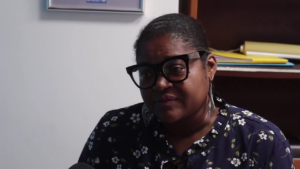
Melanie Barnes
Melanie Barnes, Child Protection Officer, UNICEF
“So when we surveyed women aged twenty to twenty-four, we found a lot of them were married Before the age of eighteen and the data is five percent versus one point four boys. So we know that in terms of Belize, there’s a large group of women who experienced early unions. In terms of the region, Belize thirty-three. Belize has thirty-three percent prevalence, which makes us rank in terms of Latin American and Caribbean as fourth. But for the Caribbean, we are first with thirty-three. The closest country to us is at thirty percent. So we have a lot of work to do in terms of addressing the age of marriage, but more so the issue of consent.”
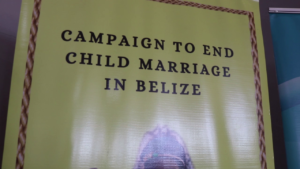 The region has made little progress on ending child marriage over the last twenty-five years and stands to become the second highest when it comes to child marriage by 2030. This is partly due to challenges regulating the rate of minors engaging in intercourse. Special Envoy for the Development of Families and Children, Rossana Briceño, explains that education is key in driving down the numbers.
The region has made little progress on ending child marriage over the last twenty-five years and stands to become the second highest when it comes to child marriage by 2030. This is partly due to challenges regulating the rate of minors engaging in intercourse. Special Envoy for the Development of Families and Children, Rossana Briceño, explains that education is key in driving down the numbers.
The struggle to police sex hinders the end of Child Marriage

Rossana Briceño
Rossana Briceño, Special Envoy for the Development of Families & Children
“That’s a hard one because we can’t police everybody. and girls, boys, they will be in relationships because it’s a part of growing up. It’s a natural process. We can’t stop anybody from having sex. Because it will happen. Whether you want it or not, it will happen. We can pretend that it’s not happening, but it is happening. What can we do? Educate them. Let them understand the consequences of having sex at an early age. The consequences of getting pregnant without protection or not being ready to get into a union or a marriage because there’s so many consequences. Health issues. A young girl is not even developed properly. You get pregnant. No, you, a child is having a child.”
 But the laws are changing, last year at the National Children’s Parliament, the call was made to raise the age of consent to marry from sixteen to eighteen years old. Today, consultations are being held to bring this change into legislation. The Executive Director of the National Commission for Families and Children spoke with us about the initiative.
But the laws are changing, last year at the National Children’s Parliament, the call was made to raise the age of consent to marry from sixteen to eighteen years old. Today, consultations are being held to bring this change into legislation. The Executive Director of the National Commission for Families and Children spoke with us about the initiative.
Curbing the numbers through a change in legislation

Shakeera Sutherland
Shakeera Sutherland, Executive Director, NCFC
“It is extremely important especially from the standpoint from NCFC because the whole objective of the National Children’s Parliament is a platform to allow the children’s voices to be heard. And so it is important for us to continue when I say us stakeholders in this case we have Special Envoy, and as well as the National Women’s Commission, that supports us to allow our children to have their voices heard. And so not only to just listen to them at the parliament, but to act and to assist because that is what we are here for.”
Poverty and a lack of education continue to be two of the main drivers in child marriage. Executive Director of the National Women’s Commission, Eleanor Murillo stressed the importance of both parents providing support for their child financially and emotionally.
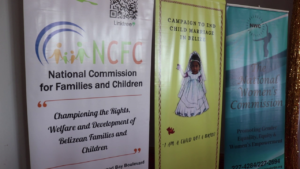 How do girls end up in child marriages?
How do girls end up in child marriages?
Britney Gordon
“So how is it that so many women enter into these unions at such a young age?”
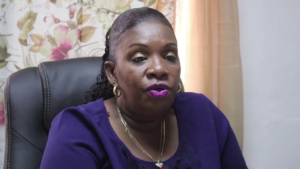
Eleanor Murillo
Eleanor Murillo, Executive Director, N.W.C.
“Wow. It’s historical. It’s cultural. It has been normalized, historically, as I said, when it comes to relationship family history, we’ve always had this issue where grown men seems to be attracted to younger women. And they usually prey on the most vulnerable families, so the very poor families in most cases. And so, if this household is poor, and there you have a man who have money or have some asset and saying, I want to take care of your daughter. In many cases, they would give up their daughter for money or so that somebody else can take care of them and that is what poverty does.”
In many rural communities, child marriage exists as part of the culture. One in five women, ages fifteen to nineteen, is married or in a union. Minister of Human Development, Families and Indigenous People, Dolores Balderamos-Garcia says that despite the ties to culture, child marriage needs to go.
The Role of Culture in the Practice of Child Marriages
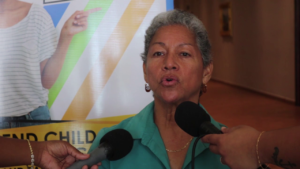
Dolores Balderamos-Garcia
Dolores Balderamos-Garcia, Minister of Human Development
“Not because early unions are permitted in certain traditional communities does that mean that it is a good thing. Because How can a twelve year old, how can a thirteen or a fourteen year old really have a child and bring up that child in a proper way? They are children themselves. And clearly a thirteen-year-old or a fourteen-year-old would not have gone to high school to finish up. And you need your education to be able to have a good life. And a good job and then be able to contribute back to society. So we want to end the child marriages and the early unions.”
Britney Gordon for News Five.






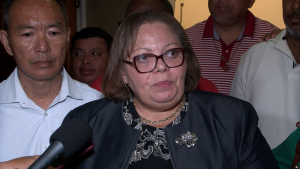
Facebook Comments